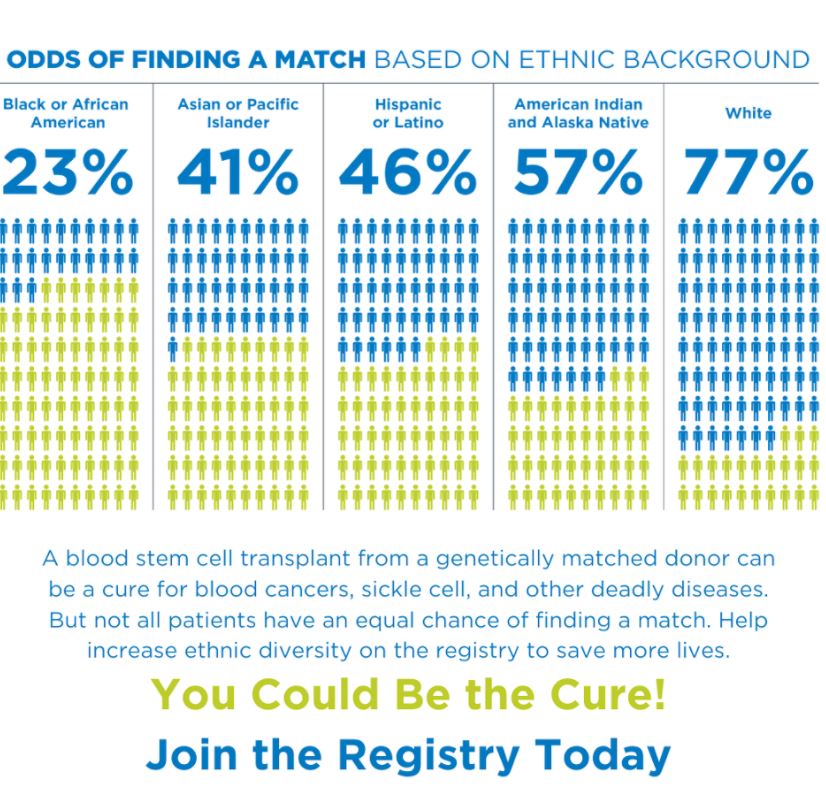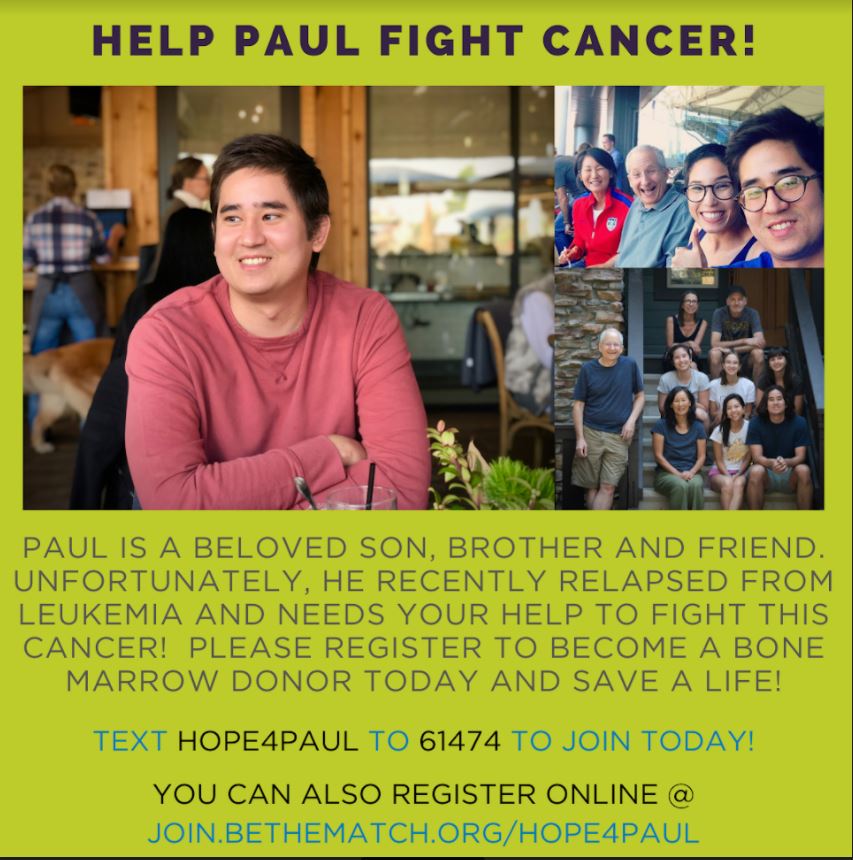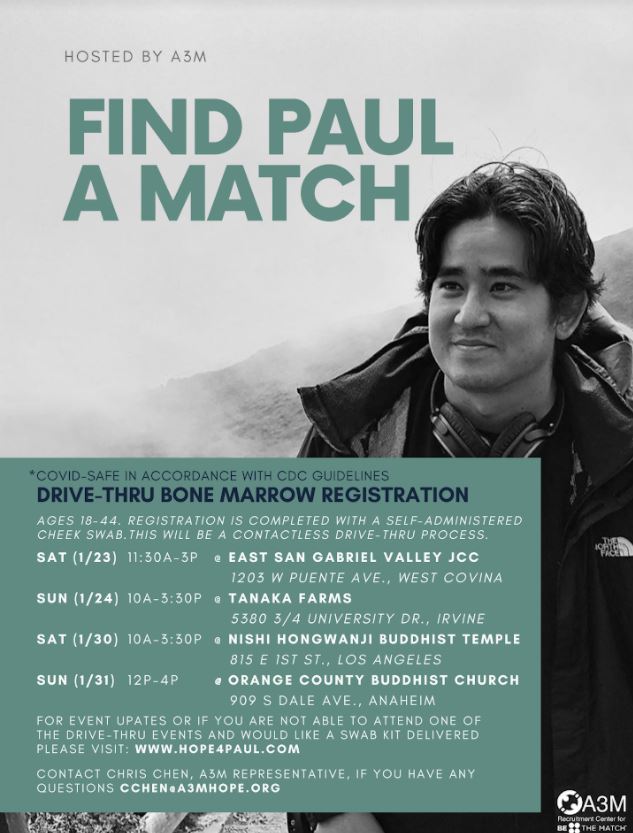Photos from Laurie Goodman
Growing up as a Japanese and White hapa in Orange County, California, Paul Goodman would always get the question, “What are you?” Now battling leukemia for the second time, he needs a bone marrow donor who has probably also been repeatedly asked the same question.
Doctors initially diagnosed the 29-year-old filmmaker in 2016. While undergoing three years of chemotherapy, he wrote, directed and edited his first feature film Evergreen in addition to two short films.
He finished his last round of chemotherapy in 2019, but last November found some lumps on his neck that indicated the cancer had returned.
A bone marrow transplant had been put on the back burner during his first fight with leukemia, but now that he has relapsed, it’s become a necessity.
Seven out of every 10 patients like Paul cannot find a fully matching donor within their family and need to rely on a registry like Be The Match. Paul’s search is even more challenging because of his biracial background.
In order to find a matching stem cell donor, scientists look at human leukocyte antigens (HLA), proteins on white blood cells that help the body recognize abnormal cells.
Asian American Donor Program (AADP), a nonprofit that recruits potential bone marrow donors in order to diversify the Be The Match registry, explained to AsAmNews that each ethnicity has its own unique set of human leukocyte antigens (HLA). Therefore, a patient’s most likely donor will be someone of the same ethnic background.
However, people of color have lower chances of finding a matching donor on the Be The Match registry due to a smaller donor pool. Whereas White patients have a 77 percent likelihood, Asian and Pacific Islander patients only have a 41 percent likelihood.

“Hapas have a much more difficult chance of finding a donor because they need a donor with the same mixed ethnicity and the identical HLA,” AADP told AsAmNews in an email. “There are only 666,370 people who identify as multiethnic on the registry, 3% of the registry. That number is very small when you take into account all of the different possible multiethnic combinations.”
In Paul’s case, he is of Japanese and Askhenazi Jewish descent. “We’re basically trying to find a one-in-a-million match,” Paul’s sister Laurie Goodman told AsAmNews. Laurie is only a 50 percent match, and Paul needs a donor with a higher match to reduce the risk of the donor cells later attacking his own cells.
“It’s so important, now that he’s going through his relapse, that basically anybody who’s gotten the question ‘What are you?’ we’re encouraging to join Be the Match,” Laurie said.
AADP told AsAmNews there needs to be more education on how stem cells are collected. When people think of bone stem cell donation, they often think of bone marrow collection, which is done surgically.
However, the process for collecting stem cells has changed. More than 75 percent of requested donations are now peripheral blood stem cells, which are collected in a non-surgical process similar to blood platelet or plasma donation.
AADP emphasizes, “Without a donor, these people will die. It is so easy to donate your blood stem cells. You are truly saving a life. This is not a slogan; it is a fact.”

In hopes of finding Paul a matching donor, his friends and family are doing a big social media campaign to encourage hapas to join the Be The Match registry.
“Through this process that my brother’s going through, we’ve actually been exposed to more hapa people than I’ve ever met in my entire life just because all these people are like, ‘Oh I’m hapa, I’ll sign up,’ and it’s really been incredible,” Laurie said.
The search for a donor is time-sensitive, as the transplant will hopefully take place around March. Paul’s friends are organizing drive-thru registration drives in Los Angeles and Orange Counties in partnership with Asians for Miracle Marrow Matches (A3M). AADP is hosting a Feb. 6 drive for Paul in Palo Alto, CA. There will also be drives in Hawaii, Texas and Nevada.
Laurie told AsAmNews that during Paul’s first battle with leukemia, they encouraged their community to register for Be The Match even though Paul didn’t need a donor back then. One of Paul’s friends ended up matching with a patient and saved her life.
Now, Paul and his family are hoping the same will happen for him.
To find out about upcoming drive-thru registration drives for Paul, visit #GanbattePaul. To register to become a bone marrow donor, you can request a home cheek swab kit from AADP or Be The Match.

AsAmNews has Asian America in its heart. We’re an all-volunteer effort of dedicated staff and interns. Check out our new Instagram account. Go to our Twitter feed and Facebook page for more content. Please consider interning, joining our staff, or making a financial contribution to support us.

